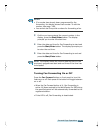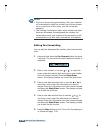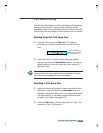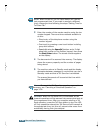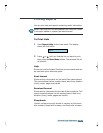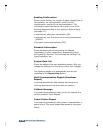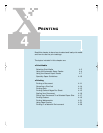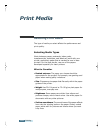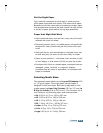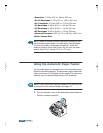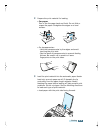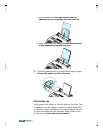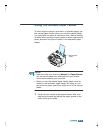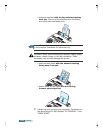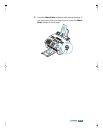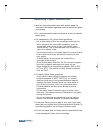
4.3
Printing
Get the Right Paper
Your machine is designed to work well on most common
office paper types and with quality 25% cotton bond paper.
Because your printer uses toner to produce an image, paper
that accepts toner produces the best results. Be sure to test
a variety of paper types before buying large quantities.
Paper that Might Not Work
• Highly textured stock, such as linen, may not print evenly
because the toner can bleed.
• Extremely smooth, shiny, or coated papers not specifically
designed for laser printers can jam the printer and repel
toner.
• Multi-part forms, such as duplicate or triplicate forms can
wrinkle and jam; the toner is also more likely to smear.
• Paper in poor condition — with tears, dust, wrinkles, curled
or bent edges, or that doesn’t lie flat can jam the printer.
• Envelopes with thick or crooked edges; envelopes that are
damaged, curled, wrinkled, or irregularly shaped;
envelopes that are shiny or embossed; or envelopes with
clasps or windows.
Selecting Media Sizes
The automatic paper feeder can hold up to 150 sheets of 20
lb. (75 g/m
2
) paper. The single-sheet manual feeder is
designed to hold one sheet. Both can be adjusted to hold
media measuring from 3 by 5 inches (76.2 by 127 mm) to
8.5 by 14 inches (216 by 355.6 mm). This includes, but is
not limited to, the following paper and envelope sizes:
• A4 :8.25 by 11.75 in; 210 by 297 mm
• A5 :5.82 by 8.25 in; 148 by 210 mm
• A6 :4.12 by 5.82 in; 105 by 148 mm
• B5 :7.16 by 10.12 in.; 182 by 257 mm
• Letter :8.5 by 11 in; 216 by 279 mm
• Folio :8.5 by 13 in; 216 by 330 mm
• Legal :8.5 by 14 in; 216 by 356 mm



